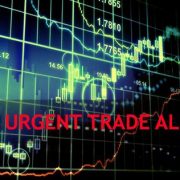As a potentially profitable opportunity presents itself, John will send you an alert with specific trade information as to what should be bought, when to buy it, and at what price.
Trade Alert ? (AAPL)
Buy the (AAPL) January, 2013 $450-$500 Bull Call Spread at $39.60 or best
Opening Trade
11-15-2012
expiration date: 1-18-2013
Portfolio weighting: increase from 10% to 20%
= 3 Contracts
It was after midnight east coast time when my call finally got through to my friend, a senior manager at Apple (AAPL). I asked, what gives? The stock is off 25% from its September peak, fresh on the heels of its wildly successful iPhone 5 launch. Is there something going on with the company that I should know about? Should I start buying here, or unload what I already have?
He said the people at Apple were just as puzzled as I. Business is great. Revenues are ramping up as expected. Early production bottlenecks had been addressed, and sales of 275 million phone units in 2013 might be possible. The introduction of the new iPad mini had been a blowout success, clocking 3 million in sales in the first weekend alone. An upgraded iMac with blistering performance was coming out in December. The peak Christmas selling season was probably going to be fantastic.
The recent plunge in the share price was solely a stock market event and had nothing to do with the company. Did I have any ideas what was causing it?
I thought for a second. I had just traveled across the heartland of America, with stops in Dallas, Houston, Orlando, and Tampa. The Obama win had come as a complete shock to virtually everyone in these cities, as it was for most of the Republican Party, especially in the investment community.
As a result, the increase in capital gains taxes in 2013 which they thought would never happen in a Romney administration was suddenly placed squarely on the table in front of them. Apple had become not only the largest holding of many managers, thanks to the fever of the past year. It also possessed the largest unrealized capital gain. These factors combined to generate only one conclusion: sell!
This is clearly what has been driving the stock down for the last two months. Worst case, the selling continues until the end of this year. Best case, it finished on an hour ago with a $526 print. The election result may have given us our final capitulation sell off.
For long term value players, the stock has fallen to insanely cheap levels. Ex-cash, it is selling at 7.5X 2013 earnings. The company has amassed a staggering $130 billion in cash, or $150 a share, and it continues to pour in at the rate of $250 million a day. By the time you have read this letter, its cash position will have increased by $500,000.
If this continues, then the company will have $250/share of cash by 2015, or some 47% of today?s $530 value. That indicates that you are getting the operating company alone at a paltry $280, with a PE multiple of 3X against an S&P 500 average of 13.5X, a level it last traded at in early 2010.
The dividend yield for this hyper growth mega cap is 2%, versus 1.60% for the ten year Treasury bond. People like me who have been at this game for 45 years have never seen numbers like these. Apple is now trading at levels that imply an imminent bankruptcy. If it doesn?t go under and lose all its cash, then the stock is a screaming buy here. Once the shock and awe of the Democratic election win wears off, and the fiscal cliff is resolved, I expect investors to pile back in.
The best execution can be had by placing your bid for the entire spread in the middle market and waiting for the market to come to you. The difference between the bid and the offer on these deep in-the-money spread trades can be enormous. Don?t buy the legs individually or you will end up losing much of your profit up front. If you don?t get filled, then just wait for the next Trade Alert. There will be many fish in the sea.
The same applies if, for any reason, you don?t understand this trade. Better to watch this strategy unfold on paper in the model portfolio before you try it with real money.
Keep in mind that these are ball park prices only. Spread pricing can be very volatile on expiration months farther out.
Here are the specific trades you need to execute this profitable position:
Buy 3 X (AAPL) January, 2013 $450 Calls at??????. $87.00
Sell short 3 X (AAPL) January, 2013 $500 calls at??...?.-$47.40
Net Cost????????????????.????. $39.6
Maximum profit at expiartion = $50.00 - $39.60 = $10.40
($10.40 X 100 X 3) = $3,120, or 3.12% for the notional $100,000 model portfolio.




